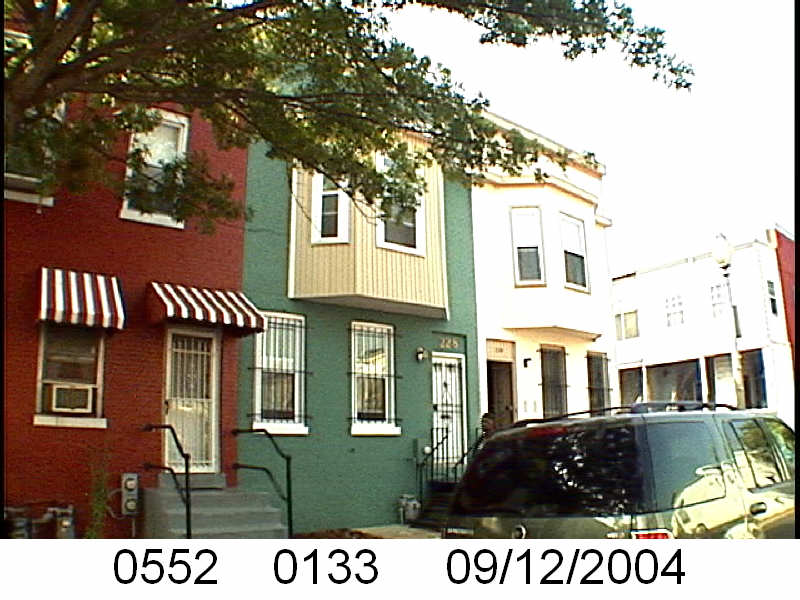The Washington Sanitary Improvement Company (WSIC) was a late 19th century charitable capitalism experiment that ended in the 1950s. This blog started looking at the homes that were supposed to be sold to African American home buyers, after decades of mainly renting to white tenants.
Looking at WSIC properties they tend to have a pattern where the properties were sold to a three business partners, Nathaniel J. Taube, Nathan Levin and James B. Evans as the Colonial Investment Co. for $3 million dollars. Those partners sold to African American buyers. There was usually a foreclosure. Then the property wound up in the hands of George Basiliko and or the DC Redevelopment Land Agency (RLA). Then there were the odd lucky ones who managed to avoid that fate.
This property is listed as lots 25 and 805.
Let’s see what happens with 125 Bates St NW:
- March 1951 (recorded 4/20/1951) Evans, Levin and Taube sold one-fourth of 125 Bates NW to Annette and Cornelius M. Smith.
- March 1951 (recorded 4/20/1951) the Smiths borrowed $3,800 from Colonial Investment Co. favorite trustees Abraham H. Levin and Robert G. Weightman.
- April 1951 Evans, Levin, and Taube sold 1/4 of 125 Bates St NW to Haywood J. Pough.
- April 1951 Pough borrowed $4,250 from trustees Abraham H. Levin and Robert G. Weightman.
- May 1951 Evans, Levin, and Taube sold a quarter of 125 Bates St NW to Willie P. Blakeney.
- May 1951 Blakeney borrowed $3,800 from trustees Levin and Weightman.
- June 1951 Evans, Levin, and Taube sold one-fourth of 125 Bates St NW to Edward L. and Fannie E. Rodgers.
- June 1951 the Rodgers borrowed $4,300 from Levin and Weightman.
- July 1954 the Smiths sold their unit back to Evans, Levin and Taube.
- January 1955 the Rodgers sold their unit back to Evans, Levin and Taube.
- May 1957 Blakeney was foreclosed upon and via an auction was held by new partner Harry A. Badt, Evans, and Taube.
- May 1957, as part of a larger property package, Harry and Jennie Badt sold/transferred their interest in 125 Bates to the survivors of Nathan Levin.
- September 1962 Haywood J. and wife Willa Mae Pough sold their portion of 125 Bates Street NW to Evans, Taube and the Nathan Levin survivors.
- April 1972, Evans, Taube, the Levin survivors and their spouses sold 125 Bates St NW to the DC Redevelopment Land Agency (RLA).
- June 1980, as part of a larger property package, the DC RLA sold the property to the BSA Limited Partnership (Kenneth S. Colburn, Lawrence J. Brailsford, Jack W. White and George Holmes Jr. signatories).
Looking at this apartment building it appears that it was unrealistic that a family could buy a unit and keep it. I wonder why the three families sold their units back to the Colonial Investment Co. partners. These people borrowed a large amount of money only to give up on their bit of the American dream of home ownership.









 Let’s see what happens with 220 Bates St NW:
Let’s see what happens with 220 Bates St NW: